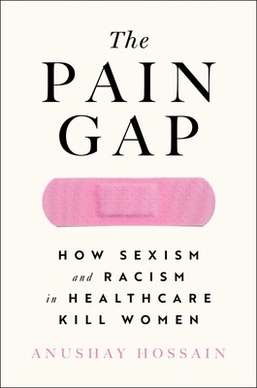The Pain Gap
The Pain Gap
The term Pain Gap refers to the disparities in the experience, diagnosis, and treatment of pain among different populations. These disparities can be influenced by various factors including race, gender, socioeconomic status, and geographic location. The pain gap is a significant issue in the field of medicine and public health as it highlights the inequalities in healthcare access and quality.
Factors Contributing to the Pain Gap[edit | edit source]
Race[edit | edit source]
Racial disparities in pain management are well-documented. Studies have shown that African Americans and other minority groups are less likely to receive adequate pain management compared to their white counterparts. This can be attributed to implicit bias among healthcare providers, differences in healthcare access, and socioeconomic factors.
Gender[edit | edit source]
Gender also plays a crucial role in the pain gap. Women are often under-treated for pain compared to men. Conditions such as endometriosis and fibromyalgia, which predominantly affect women, are frequently underdiagnosed and undertreated. This disparity is partly due to gender bias in medical research and practice.
Socioeconomic Status[edit | edit source]
Individuals with lower socioeconomic status often face barriers to adequate pain management. These barriers include lack of access to healthcare, inability to afford medications, and limited availability of specialized pain management services.
Geographic Location[edit | edit source]
Geographic disparities also contribute to the pain gap. People living in rural areas may have limited access to healthcare facilities and pain management specialists. This can result in delayed diagnosis and treatment of pain conditions.
Impact of the Pain Gap[edit | edit source]
The pain gap has significant implications for quality of life, mental health, and overall well-being. Chronic pain can lead to disability, depression, and anxiety, further exacerbating the disparities in health outcomes among different populations.
Efforts to Address the Pain Gap[edit | edit source]
Efforts to address the pain gap include increasing awareness among healthcare providers about the existence of these disparities, improving access to pain management services, and promoting cultural competence in healthcare. Research initiatives aimed at understanding the underlying causes of the pain gap and developing targeted interventions are also crucial.
See Also[edit | edit source]
References[edit | edit source]
Translate: - East Asian
中文,
日本,
한국어,
South Asian
हिन्दी,
தமிழ்,
తెలుగు,
Urdu,
ಕನ್ನಡ,
Southeast Asian
Indonesian,
Vietnamese,
Thai,
မြန်မာဘာသာ,
বাংলা
European
español,
Deutsch,
français,
Greek,
português do Brasil,
polski,
română,
русский,
Nederlands,
norsk,
svenska,
suomi,
Italian
Middle Eastern & African
عربى,
Turkish,
Persian,
Hebrew,
Afrikaans,
isiZulu,
Kiswahili,
Other
Bulgarian,
Hungarian,
Czech,
Swedish,
മലയാളം,
मराठी,
ਪੰਜਾਬੀ,
ગુજરાતી,
Portuguese,
Ukrainian
Navigation: Wellness - Encyclopedia - Health topics - Disease Index - Drugs - World Directory - Gray's Anatomy - Keto diet - Recipes
Search WikiMD
Ad.Tired of being Overweight? Try W8MD's physician weight loss program.
Semaglutide (Ozempic / Wegovy and Tirzepatide (Mounjaro / Zepbound) available.
Advertise on WikiMD
WikiMD is not a substitute for professional medical advice. See full disclaimer.
Credits:Most images are courtesy of Wikimedia commons, and templates Wikipedia, licensed under CC BY SA or similar.Contributors: Prab R. Tumpati, MD

